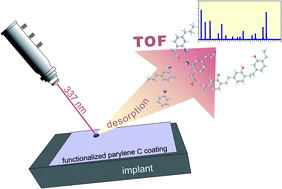LDI-MS examination of oxygen plasma modified polymer for designing tailored implant biointerfaces†
Abstract
A versatile polymer coating for biomaterials was fabricated by the mild oxygen plasma treatment of Chemical Vapour Deposited (CVD) parylene C. The surface properties were tailored while the excellent protective properties of the bulk were preserved. The species, formed due to the plasma functionalisation, were fingerprinted by a novel Laser Desorption/Ionisation-Mass Spectrometry (LDI-MS) method. Improved osteosarcoma cells (line MG-63) attachment and viability on a modified surface were demonstrated.


 Please wait while we load your content...
Please wait while we load your content...